Nintendo released The Legend of Zelda: Breath of the Wild earlier this year, and I have enjoyed exploring the beautiful land of Hyrule. The simple acts of sprinting, climbing, and gliding through the world has been a surprisingly pleasurable experience.
This post is about all the attentions to detail that were devised and, more poignantly to this blog, developed.
Calamity Ganon’s in the Details
The sheer scale of Hyrule in BotW is astounding. I have noticed so many delightful flourishes that please me to no end.
Environment
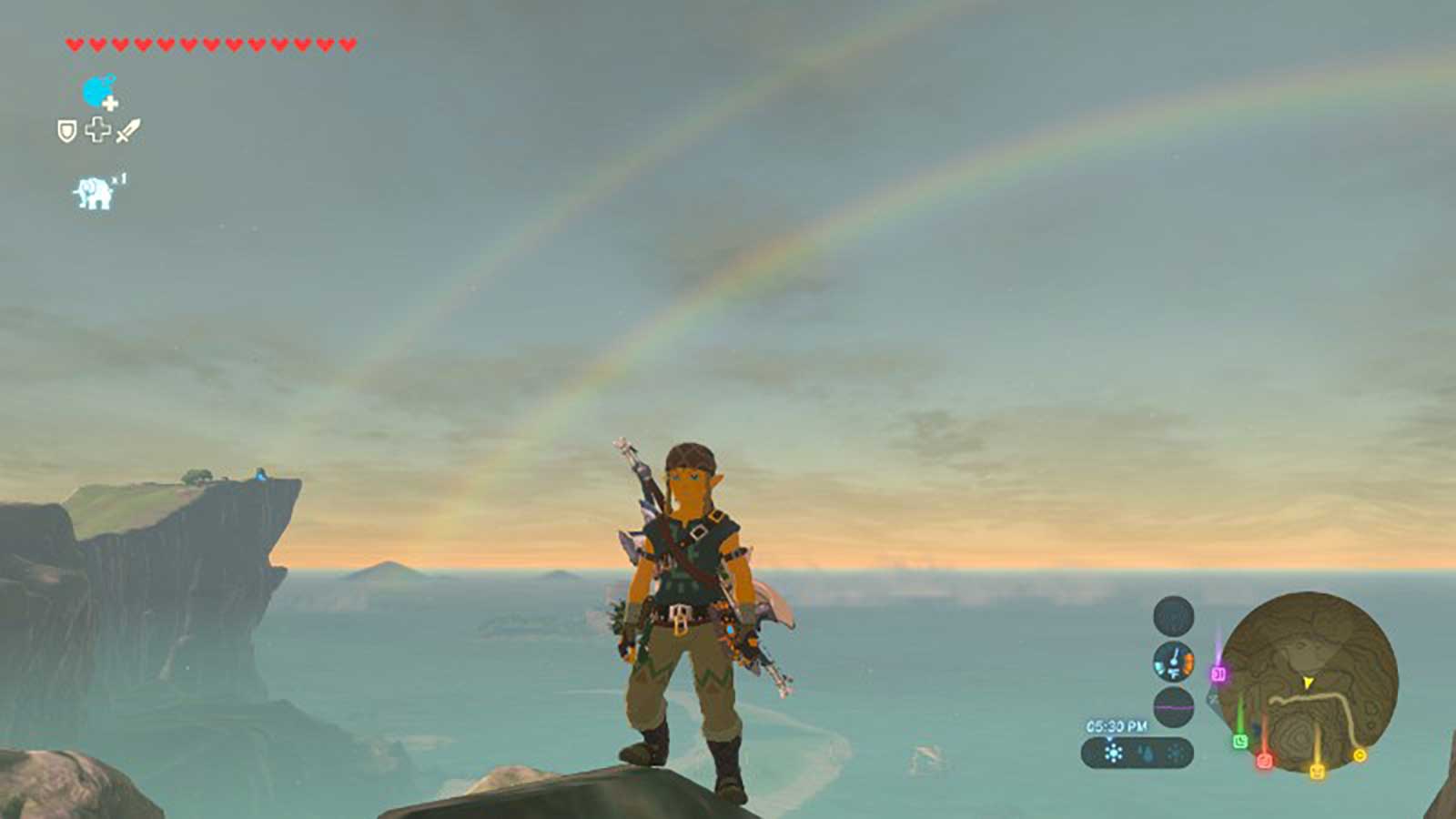 Double rainbow after a thunderstorm in Hyrule
Double rainbow after a thunderstorm in Hyrule
Following the theme set in Ocarina of Time, BotW definitely has sunrise to sunset as a major gaming element. The colors of the world are vividly cast into the various hues from the sun at different times of day. This affect is compounded by mountains casting shadows in ravines and rainy skies casting minimal shadows in a dark, bleak scene.
Braving the Elements
Elements are not specifically called out as such, yet they are an integral part of the game; fire/heat, water/rain, electricity/lightning, and ice/cold. These all interoperate together for an enchanting experience. Developing how these all operate together must have been a fun challenge to program.
🔥 Fire / Heat
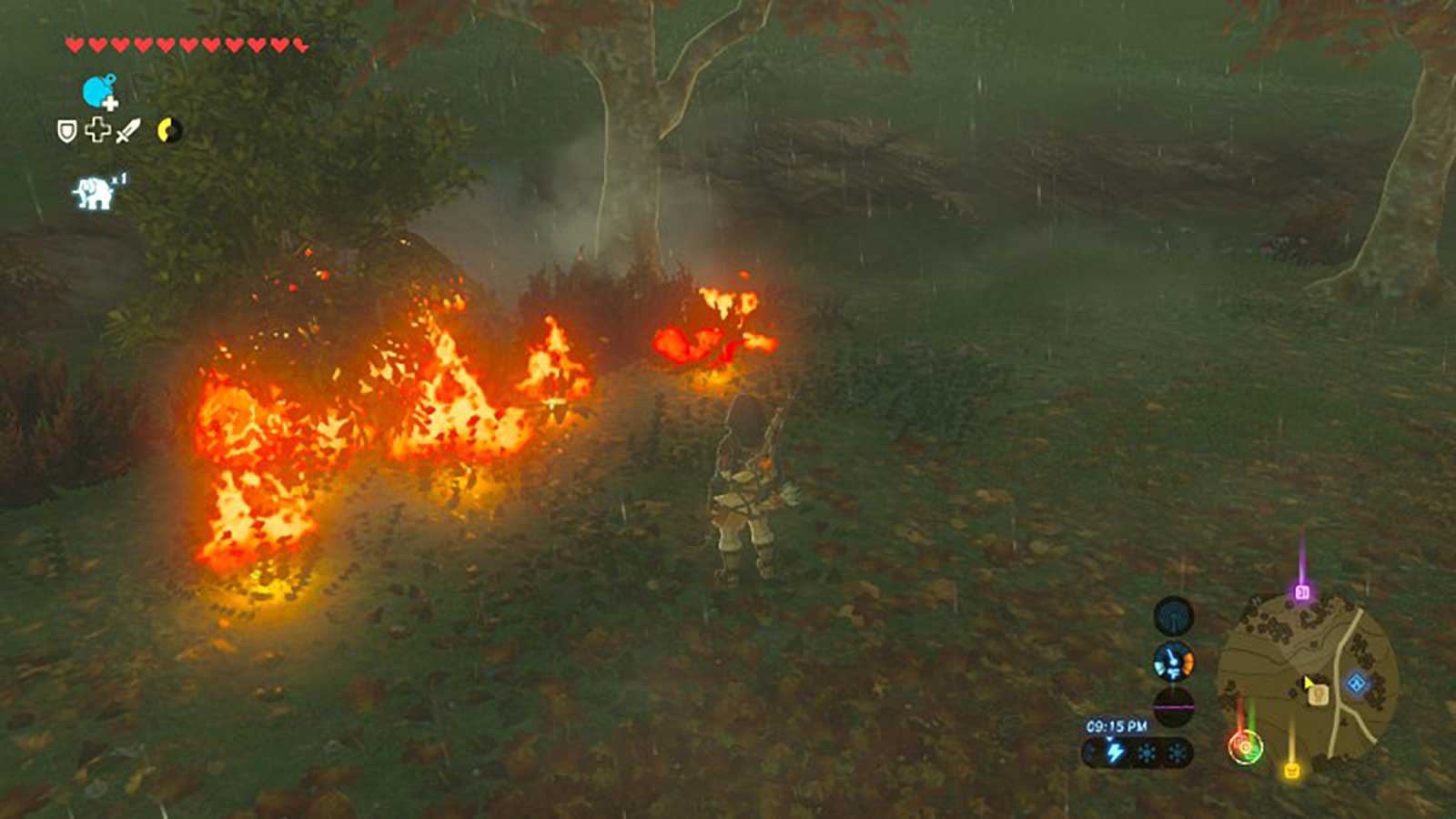 Looking like an arsonist
Looking like an arsonist
- Fire cooks food
- Bigger fires create heated updrafts for launching high in the air with the glider
- Death Mountain’s heat burns wooden items Link has equipped
- Fires keep Link warm in cold climates
🌧️ Water / Rain
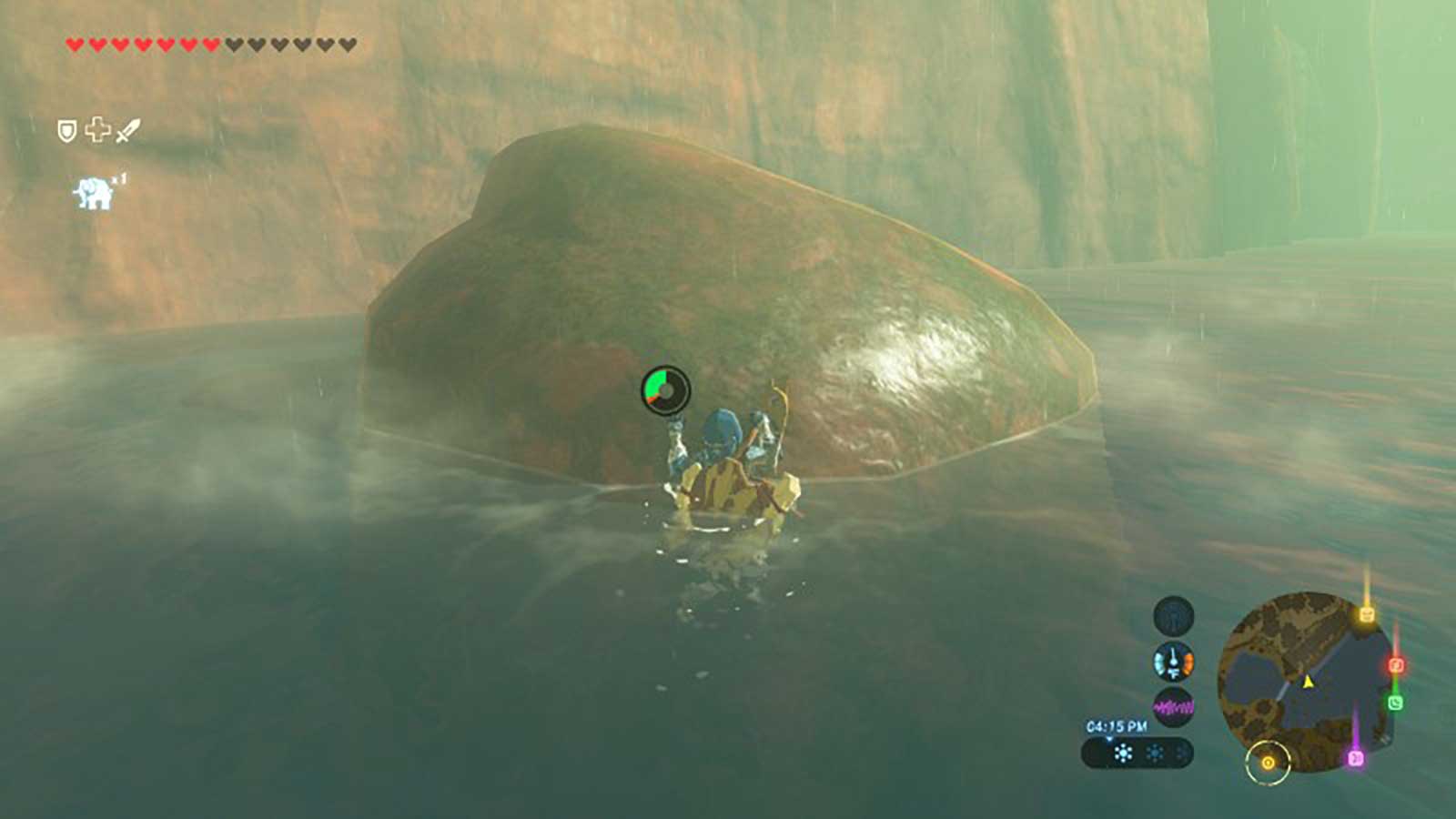 Rain-slicked rock giving Link a break from swimming
Rain-slicked rock giving Link a break from swimming
- Water and rain put out fires
- Rain makes mountain surfaces slick and difficult to climb
- Lakes, rivers, and waterfalls litter the landscapes, hot springs restore health
⚡️ Electricity / Lightning
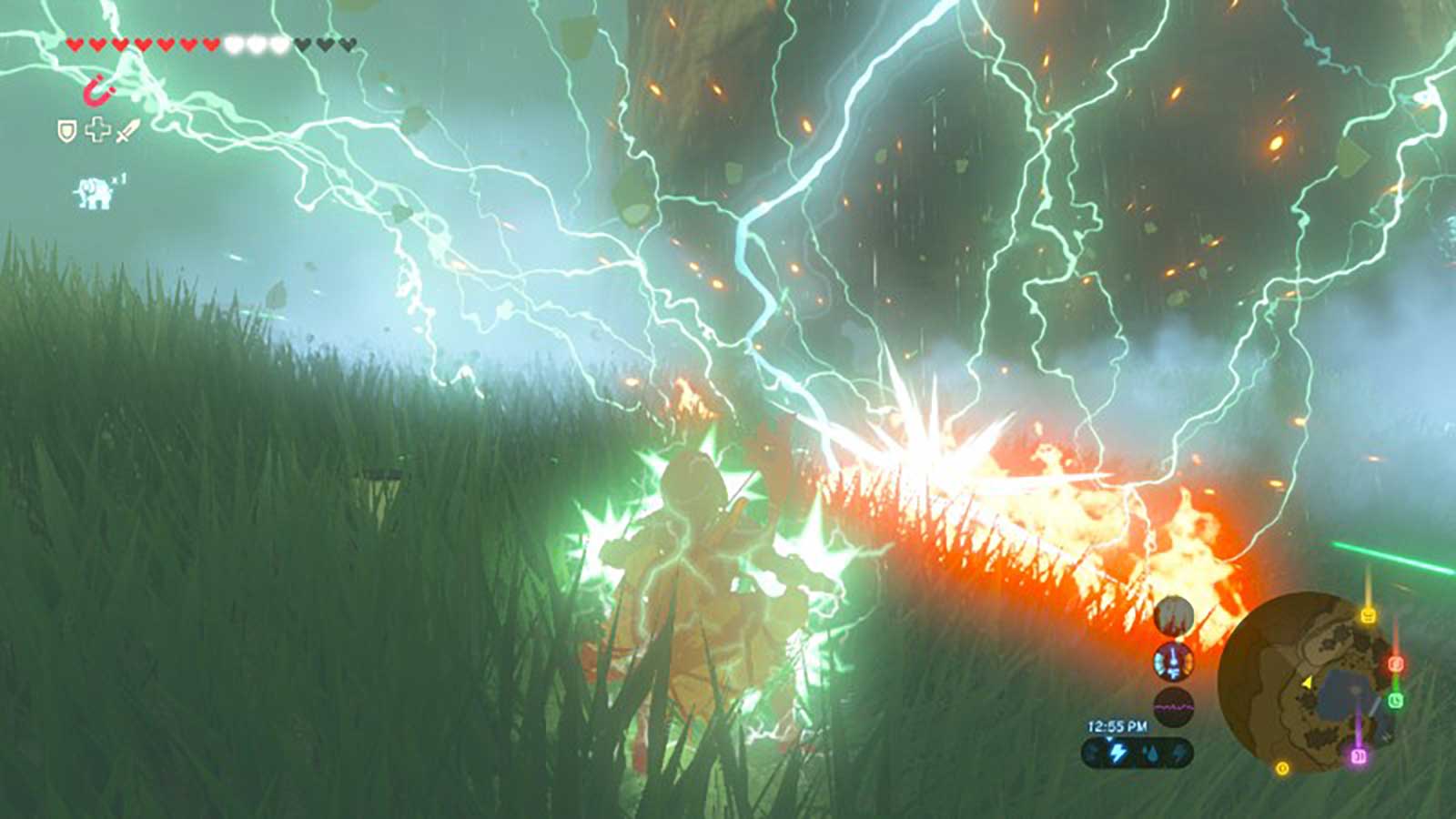 Too close to a lightning strike catching grass ablaze
Too close to a lightning strike catching grass ablaze
- Electricity can be used to electrocute enemies standing in water within a certain radius
- Lighting from a thunderstorm starts fires in lands with grasses
- Lighting is attracted to any metal items Link has equipped
❄️ Ice / Cold
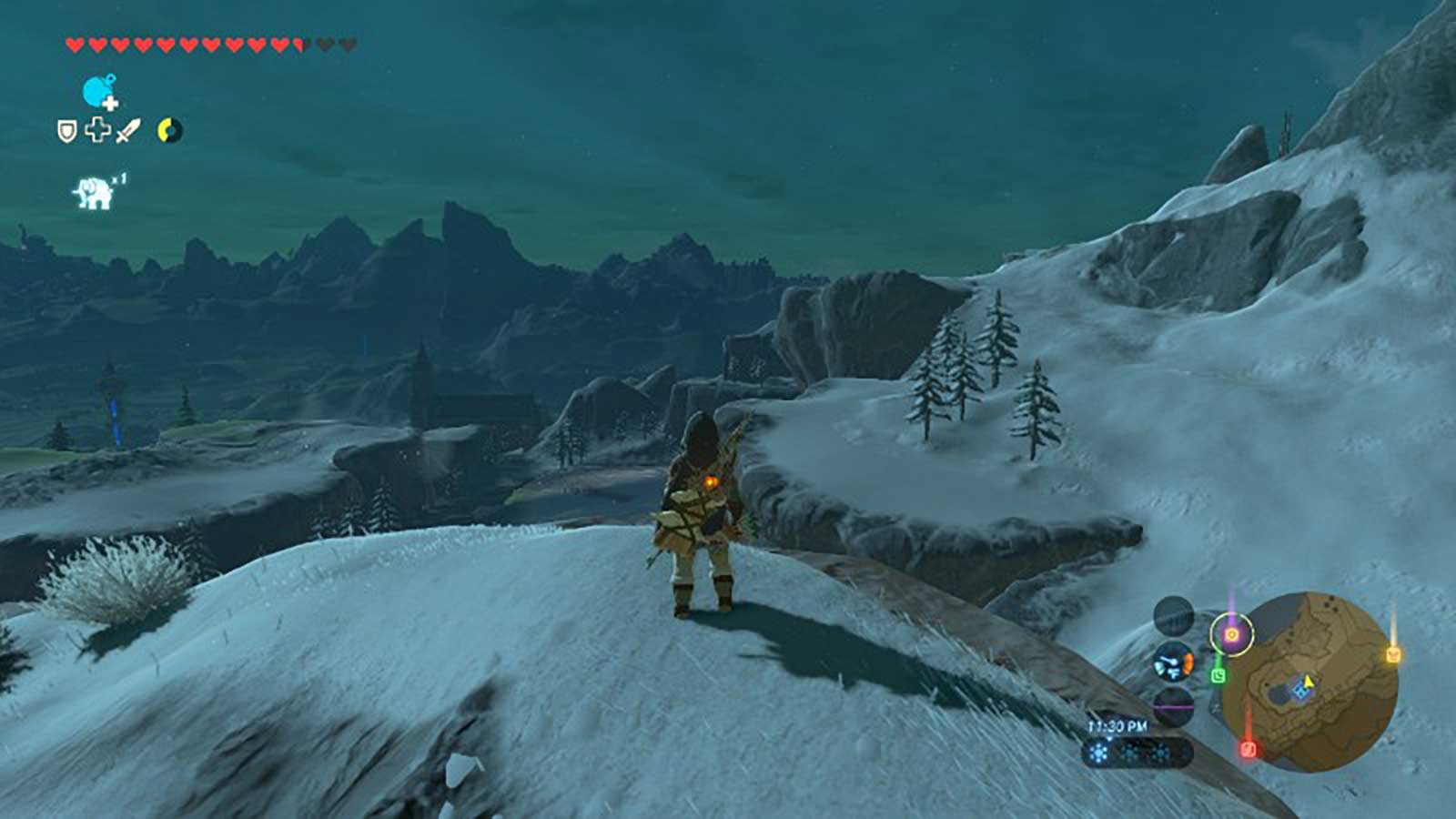 Overlooking the snow landscape
Overlooking the snow landscape
- Cold weather freezes food, which imbue heat protection when eaten
- Ice can be climbed, and thawed with fire to reveal treasure
Beauty and the Beasts
Insects and animals scattered about the land provide details to a huge world that would make it very boring otherwise. Wolf packs hunt you when approached, large bulls charge at you, cranes and birds fly away, lizards scurry along the ground, and every insect wants nothing to do with Link. Fish will even flop onto the land to avoid being caught.
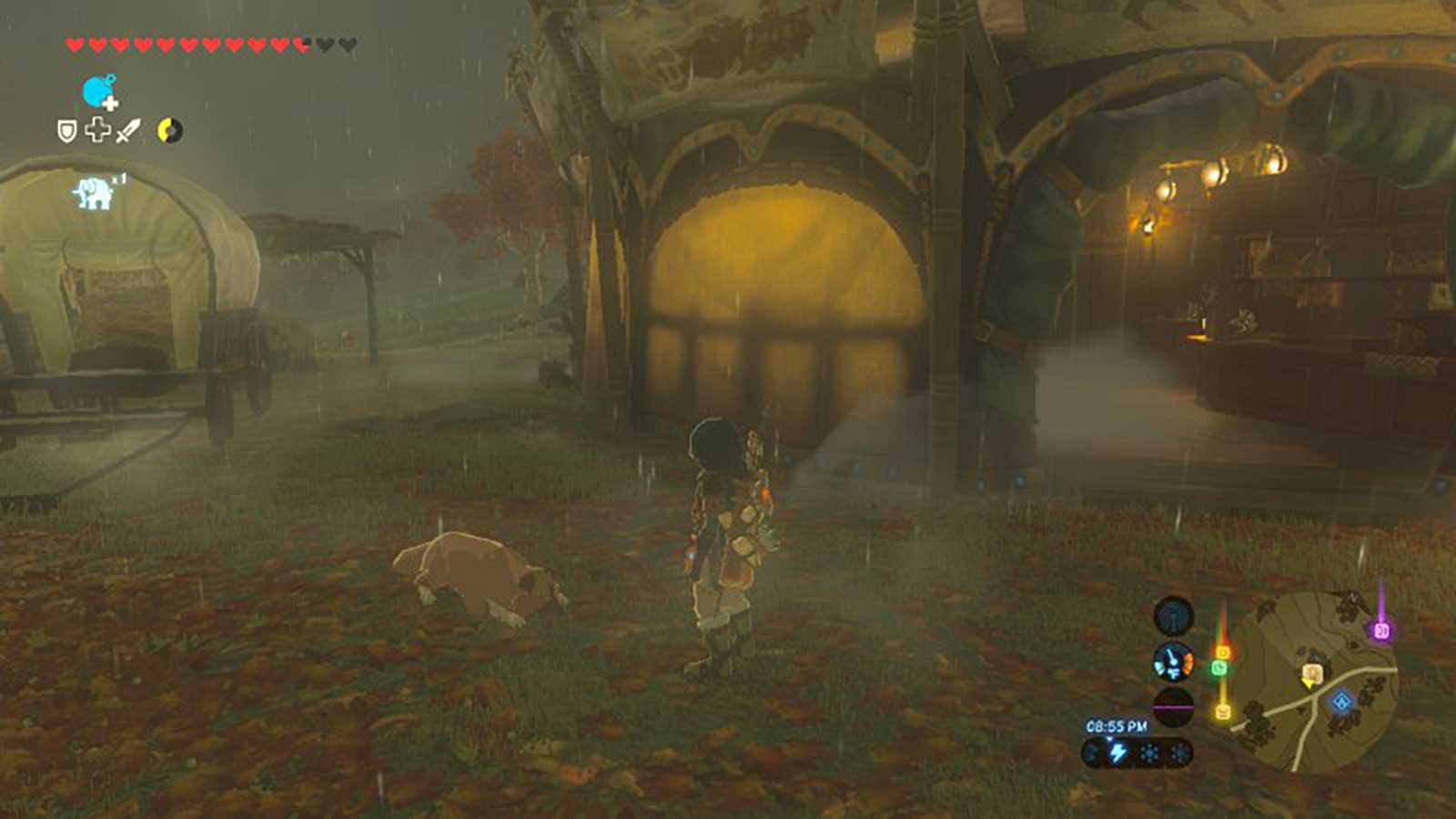 Dogs even want to play with Link
Dogs even want to play with Link
There are also friendly animals that can help you along your quest. Horses can be tamed and ridden, dogs can be charmed to show you treasure, and with the Wolf Link Amiibo – a Wolf Link will follow you and attack enemies so precious weapon resources do not have to be wasted.
🐾 Taking Paws
There are a few details from the animals in Hyrule that unexpectedly enchanted me:
- Dogs at the stables will chase their tails when approached, if you have previously fed them
- Taming a horse takes stamina and will buck much like a rodeo horse
- Wild wolves will circle Link, and then attack as a pack
Developing the Wild
Disclaimer: The last 3D related development I was involved with was creating Unreal 2004 maps. That was not heavy development, mostly design and 3D modeling. Previous to that it was Doom 2 wad creation (not 3D). The following thoughts are about creating Hyrule from my experience there, engineering past, and present.
Geofencing “Zones”
A majority of the elements mentioned above can be represented with geofencing. Once a character (Link in this instance) crosses a polygonal line, an effect for that area can be utilized by the system. This could be anything from allowing thunderstorms to saying this is a desert where rain is not allowed. It, essentially, creates a system of booleans to enable or disable zone behavior.
Defining zones could also determine wildlife, though it seems to me that wildlife is definitely planned less sporadically and relegated to areas in specific zones. It would be odd to see a wolf on the cliff face – they have to be penned to less vertical surfaces – and then could be randomly placed upon load.
Interaction
In addition to environmental changes, zones can affect Link. Cold, snowy areas require warm clothing, desert areas require heat resistant clothing. Lava areas require unequipping wooden weapons. Thunderstorms require unequipping metal weapons.
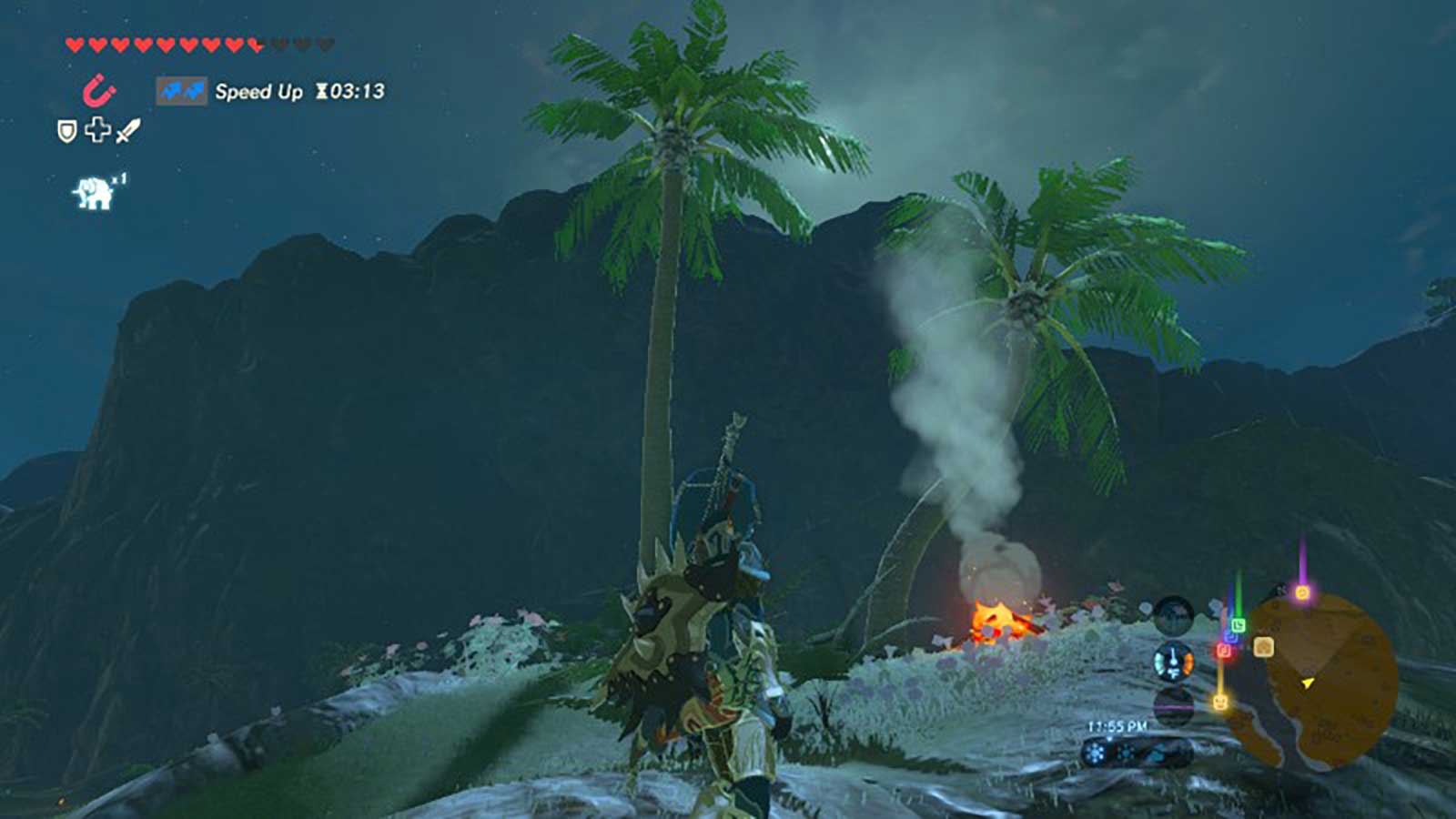 Campfire raging with billowing smoke, lit by the moon
Campfire raging with billowing smoke, lit by the moon
Developers created behaviors for lightning’s attraction to metal, otherwise it simply strikes to the land below. I imagine this bolt is contained a polygonal cylindrical column to affect anything caught inside its circumference.
Proximity to animals and insects triggers an animation. Dogs can recognize you, and will follow you and wag their tails, depending on the cultivated relationship. As in most 3D games, enemies know when your character is close and immediately descend upon you for attack.
I have enjoyed imagining what work went in to developing the experiences in Breath of the Wild. I know there are developers out there that worked hard bringing life into this world. I do not currently do game development – this game inspires me to continue to be creative, and that the attentions to detail matter, in the work I do. It reminds me that someone could stumble upon my details, and be enchanted with the work I developed.